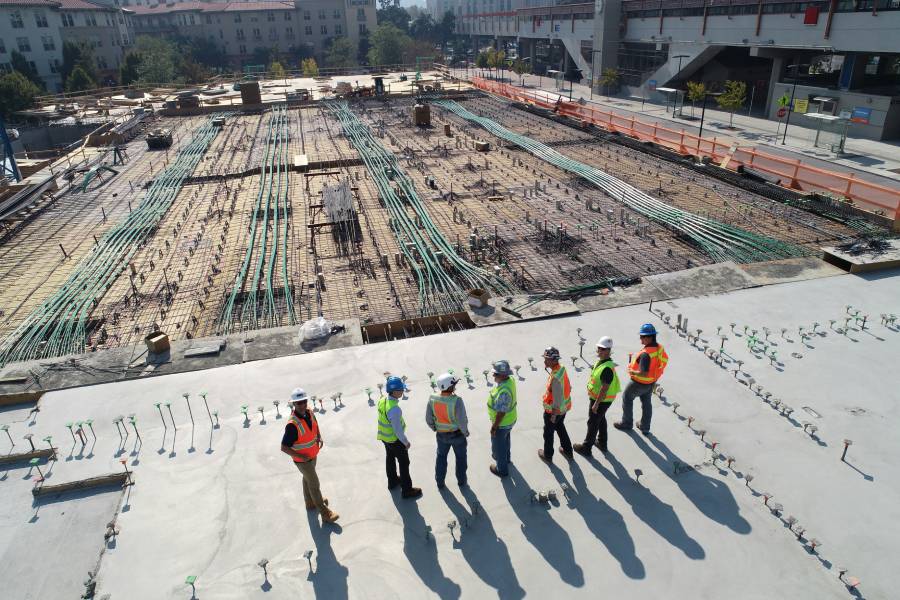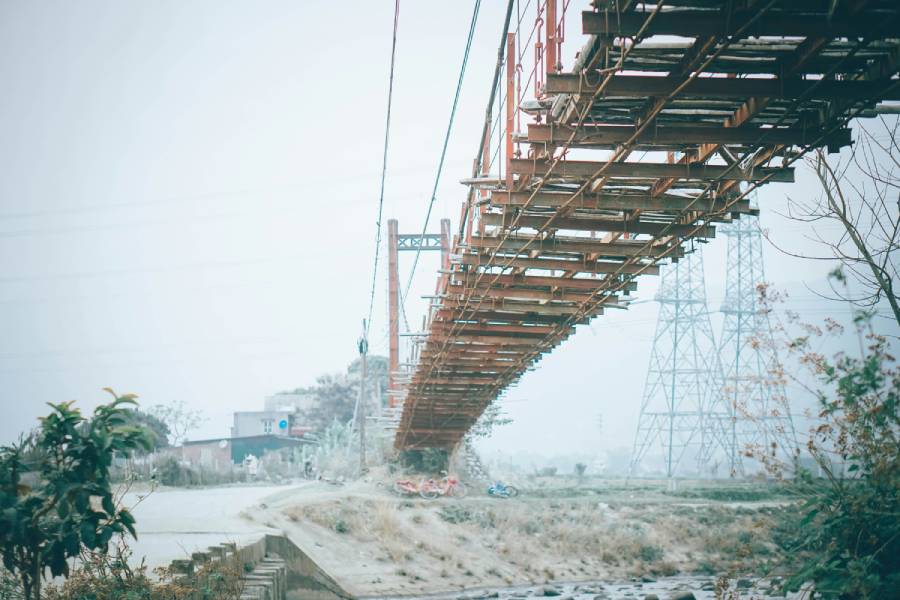The history of civil engineering is a tale as old as time. Even before it had a name, civil engineering was at the heart of how people shaped the world around them, building shelters, roads, and systems that allowed communities to grow and thrive.
While the term “civil engineering” is modern, the practice itself dates back over 5,000 years. From early human shelters to today’s smart infrastructure, civil engineering has evolved with us every step of the way.
From pyramids to smart cities, civil engineering is the silent force behind civilization.

History of Civil Engineering: Civil Engineering in Prehistoric Times
Long before blueprints or calculations, early humans used basic civil engineering instincts to survive. They built shelters in caves and figured out how to cross rivers using logs as bridges. These simple, yet crucial acts were the foundations of what we now consider engineering.
Early communities used leverage, natural materials, and tools to solve everyday problems, laying the groundwork for more advanced construction in the centuries to come. Without knowing it, these early builders began the story of civil engineering.
Ancient Civilizations and Their Engineering Feats
Egypt & Mesopotamia
Some of the first true engineering marvels came from ancient Egypt and Mesopotamia. Around 2550 BCE, Imhotep, often considered the first civil engineer, designed and constructed the Stepped Pyramid of Djoser in Saqqara. Using simple tools and early mathematics, he created a structure that still stands today.
These civilizations also introduced mud bricks, early surveying methods, and ramps to move heavy stones, technologies far ahead of their time.
Indus Valley Civilization
The cities of Mohenjo-Daro and Harappa were incredibly advanced for their time. They featured urban planning, straight streets in grid patterns, covered sewage systems, and public water reservoirs. These innovations show how civil engineering was central to ancient life, even 4,000 years ago.
Ancient China
China contributed monumental projects like the Great Wall, vast canal networks, and advanced flood control systems. These required large-scale labor coordination and early hydraulic knowledge, showing that civil engineering was essential to protecting and organizing societies.
Greece and Rome
The Greeks gave us the Parthenon, but it was the Romans who took civil engineering to new heights. They built:
- The Appian Way, one of the earliest roads
- Massive aqueducts to transport water across cities
- The Pont du Gard in France
- Durable concrete, arches, and domes
Rome’s infrastructure helped connect its empire, and many Roman bridges and roads are still in use or visible today.
Sri Lanka, Peru, and Others
Civil engineering wasn’t just happening in Europe and the Middle East. In Sri Lanka, engineers built the massive Jetavanaramaya stupa and intricate irrigation networks that still function. In Peru, the Inca Empire built Machu Picchu, a city with drainage systems, stonework, and running water at the top of a mountain. The Hohokam people in present-day Arizona developed canal systems that irrigated arid land as early as 600 AD.

Key Innovations:
- Arches and domes
- Aqueducts and water transport
- Concrete and stone shaping
- Surveying tools and urban layouts
Medieval and Renaissance Engineering
The Middle Ages saw incredible civil structures like castles, cathedrals, and fortifications. The Notre Dame Cathedral in Paris is a prime example, built with flying buttresses, rib vaults, and pointed arches, techniques that helped structures rise taller and remain stable.
Meanwhile, Islamic engineers developed qanats (underground water channels), water wheels, and bridges that served growing cities.
During the Renaissance, thinkers like Leonardo da Vinci began sketching machines and bridges, combining science, geometry, and creativity. While many of his concepts weren’t built at the time, they inspired future engineering breakthroughs.
In this era, engineering knowledge was passed through guilds and master builders, and projects were completed through craft and repetition rather than formal scientific understanding.
When Did Civil Engineering Start?
Industrial Revolution
The Industrial Revolution changed everything. With the ability to mass-produce iron and steel, engineers could now build:
- Bridges like the Iron Bridge in England (1779)
- Railways, canals, and harbors
- Lighthouses to aid maritime navigation
Steam-powered tools also made construction faster and more efficient.
Formalization of Civil Engineering
The term “civil engineering” was officially coined in the 18th century to separate civilian infrastructure from military projects. In 1747, École des Ponts et Chaussées opened in France, the first school dedicated to training civil engineers.
John Smeaton, often recognized as the father of civil engineering, built the Eddystone Lighthouse and founded the Smeatonian Society of Civil Engineers.
In 1818, the Institution of Civil Engineers (ICE) was established in London. Its 1828 Royal Charter officially defined civil engineering and helped shape the profession.
Civil Engineering in the 20th Century
The 20th century wasn’t just about innovation; it was a turning point for civil engineering. Cities exploded in size, technology advanced rapidly, and engineers found themselves designing bigger, bolder, and more complex projects than ever before.
This era gave us some of the most iconic infrastructure on the planet. Skyscrapers like the Empire State Building changed the way cities looked and lived. Thanks to steel frame construction and elevators, buildings could finally reach the sky. Massive dams like the Hoover Dam in the U.S. and the Aswan High Dam in Egypt weren’t just engineering feats; they reshaped entire ecosystems by providing electricity, water storage, and flood control.
The expansive highway systems and modern airports revolutionized travel, commerce, and the way people connected across countries. Breakthroughs in tunnel boring technology made it possible to build underground subways and underwater tunnels, transforming urban mobility. Bridges like the legendary Golden Gate Bridge pushed engineering boundaries, proving that beauty and functionality could go hand in hand.
This century wasn’t just about building things; it was about scaling civil engineering to meet the demands of a rapidly modernizing world.
Civil Engineering in the 21st Century
As we step further into the 21st century, we’ve got to say that civil engineering has evolved drastically. Engineers today are solving problems that go far beyond roads and bridges. They’re tackling climate change, natural disasters, aging infrastructure, and growing cities with smarter, cleaner technologies.
Green Engineering & Climate Resilience
Today’s civil engineering is all about building with purpose. It’s no longer just about strength and scale; it’s about efficiency, sustainability, and technology. Modern engineers are creating structures that adapt to climate change, reduce emissions, and think for themselves.
Green engineering is leading the charge with innovations like LEED-certified buildings, carbon-neutral concrete, and disaster-resilient infrastructure. These aren’t just eco-friendly upgrades, they’re essential tools for protecting communities and the planet.
At the same time, engineers are embracing smart infrastructure. With IoT sensors, roads and bridges can now monitor their own condition in real time, allowing for predictive maintenance before problems become dangerous. Some materials even have the ability to self-heal, reducing long-term repair costs.
And behind all of this? A powerful digital toolkit. Engineers now use BIM, CAD/CAM software, drones, AI, and even digital twins to design and manage complex projects with speed and accuracy.
From modular buildings to net-zero energy systems, civil engineering is evolving fast, and helping build a future that’s safer, smarter, and more sustainable than ever before.
Global Timeline of Civil Engineering Milestones
| Year | Event |
| 2550 BCE | Pyramid of Djoser by Imhotep (Egypt) |
| 312 BCE | The Appian Way was built by Roman engineers |
| 100 AD | Pont du Gard (France) completed |
| 600 AD | Hohokam canal systems (Arizona) |
| 1747 | École des Ponts et Chaussées founded |
| 1779 | Iron Bridge constructed (England) |
| 1818 | The Institution of Civil Engineers was founded |
| 1835 | First U.S. CE degree (Rensselaer Polytechnic) |
| 1905 | First female CE degree (Cornell University) |
| 1935 | Hoover Dam completed (USA) |
| 1994 | Channel Tunnel opens (UK–France) |
| 2020s | Rise of smart infrastructure and green engineering |
The Future of Civil Engineering: What’s Next?
The next decade of civil engineering will be defined by smart design, sustainability, and cutting-edge technology. As cities grow and climate risks increase, engineers will be challenged to build infrastructure that’s not just strong, but intelligent and eco-conscious.
At the same time, engineers will turn to sustainable materials like geopolymer concrete, recycled steel, and bamboo, reducing emissions while keeping performance high.
3D printing will make custom components more affordable and precise, speeding up builds and cutting waste. Meanwhile, modular construction will allow structures to be assembled off-site, improving quality and reducing on-site disruptions.
Civil engineers will also work across disciplines, combining data science, climate planning, and AI to create smarter, cleaner cities. From vertical farms to renewable infrastructure, the future of civil engineering is about designing systems that protect people and the planet.

Conclusion
From crossing rivers with logs to designing smart cities, the history of civil engineering is deeply intertwined with the story of humanity itself.
We’ve gone from shaping stones to shaping skylines, guided by creativity, logic, and the desire to improve life. Civil engineers have built the past, are shaping the present, and will design a more resilient future.
As long as people build, civil engineering will evolve.
